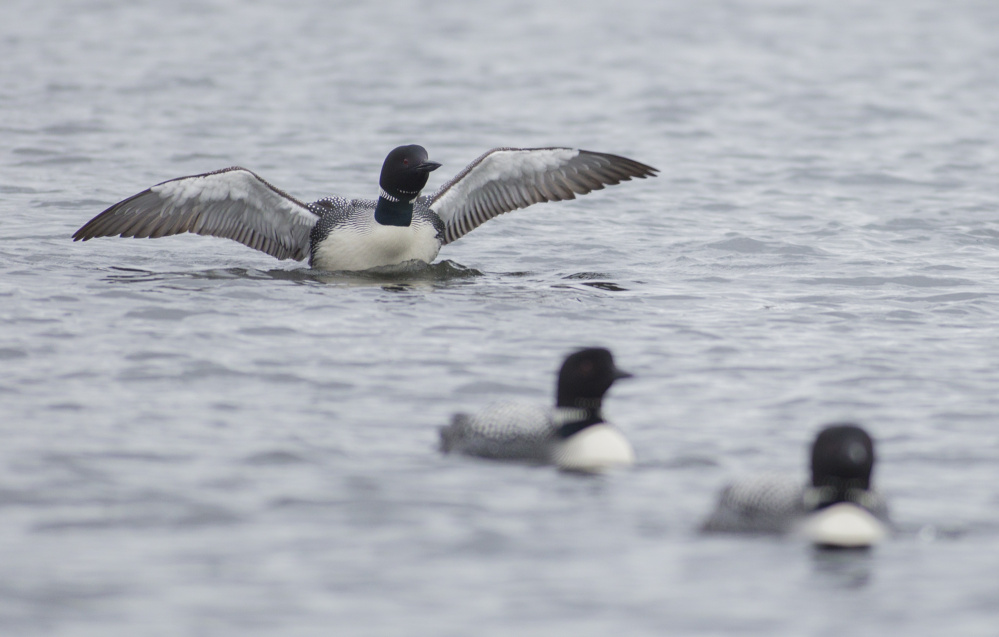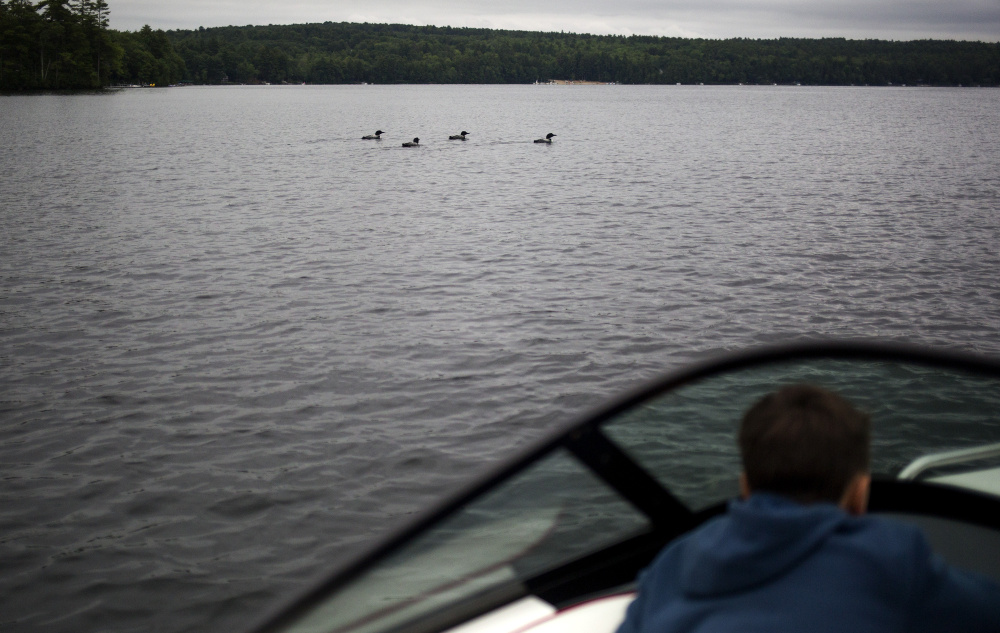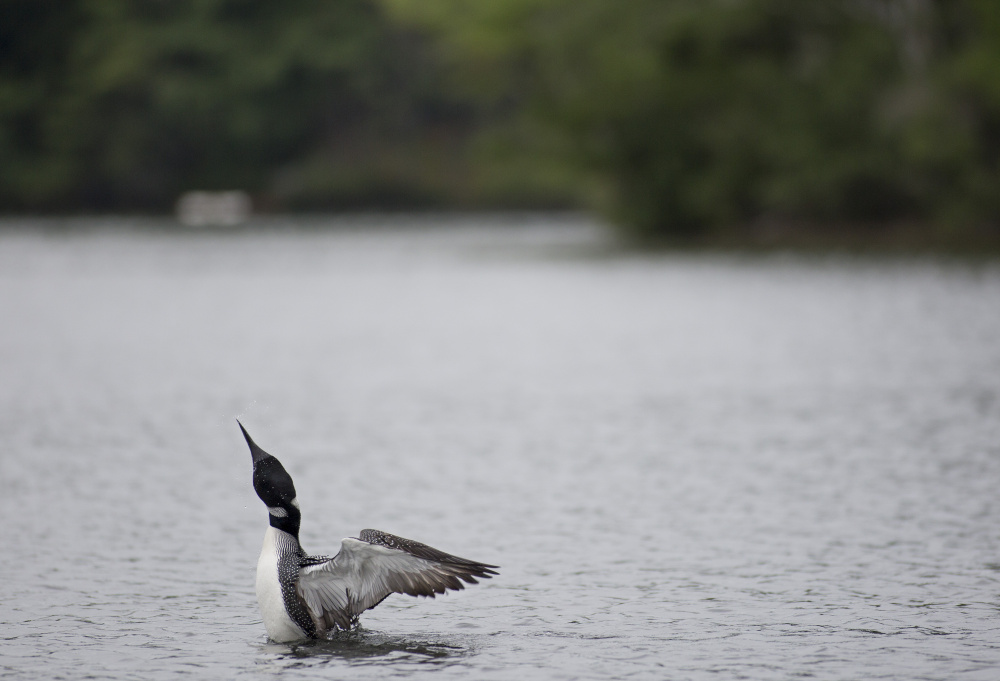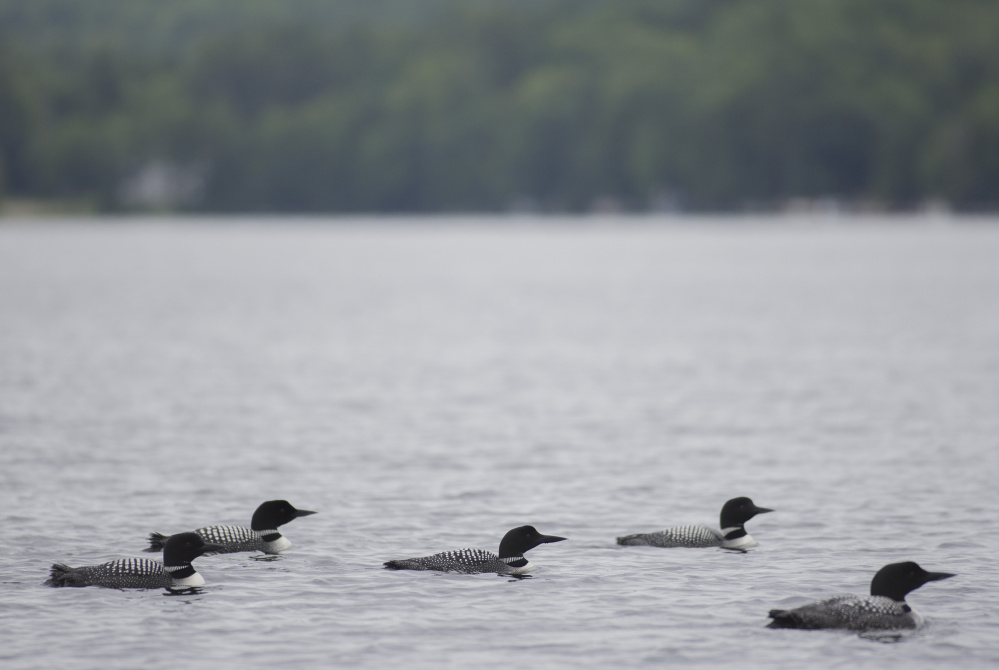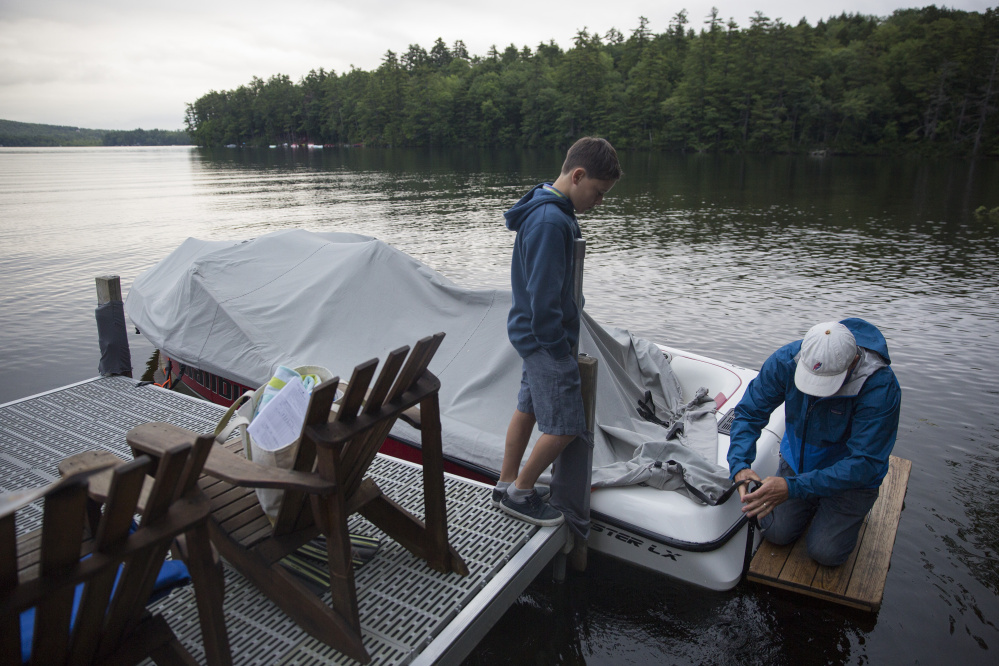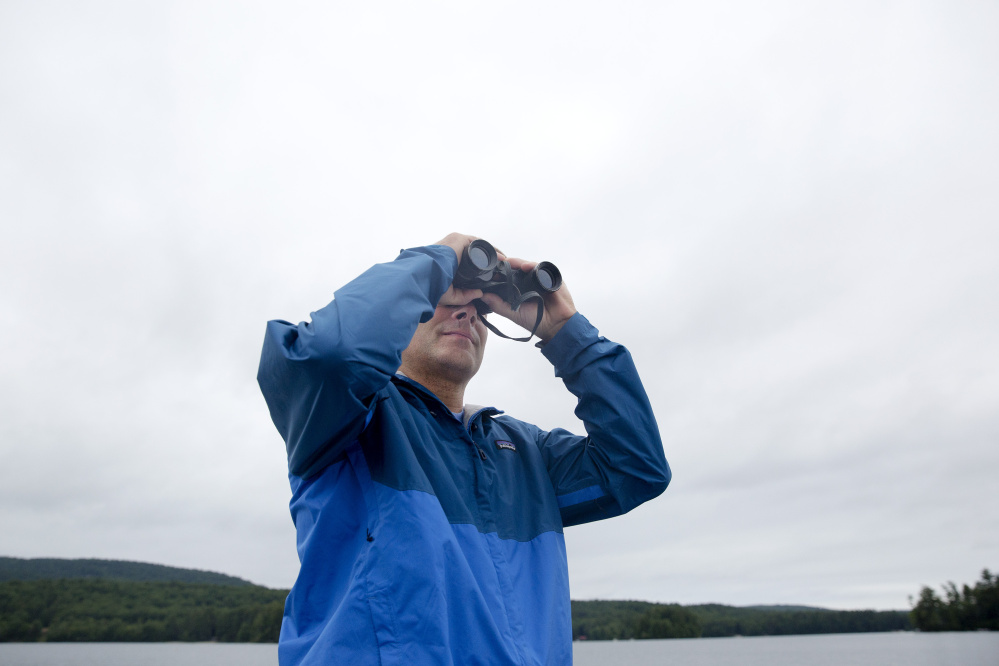RAYMOND — At 7 a.m. Saturday, the water stretched out flat and calm on Crescent Lake as Nathan Kimble and his 10 -year-old son, Alex, stepped into their motor boat from the dock outside their cabin.
Father and son were headed out to count loons as part of Maine Audubon’s 34th annual Loon Count, a job they took over from their elderly lakeside neighbors three years ago. While they see loons every day on the lake, they had yet to encounter a loon during a loon count.
“I think they sleep in. You hear them in the middle of the night,” Kimble said.
The two were among more than 850 volunteers who surveyed assigned sections of lakes and ponds across Maine for a half hour Saturday – between 7 and 7:30 a.m. – counting any loons they encountered.
The count helps build public awareness about loons, which are one of the best indicators of the health of Maine’s fresh water bodies, said Susan Gallo, director of Maine Audubon’s Maine Loon Project. The results of the count will not be available until October.
Last year, nearly 900 volunteers surveyed 304 lakes and ponds. Maine Audubon calculated there were 2,848 adult loons and 384 chicks in southern Maine, which is south of the 45th parallel, or from Calais to the east and Rangley to the west.
Gallo said based on 10-year-old aerial surveys, there are another 1,000 to 1,500 loons in northern lakes and ponds, where the birds encounter very different conditions. Northern lakes tend to be surrounded by granite, which makes it difficult for loons to find the marshy shoreline conditions they favor for nesting.
Gallo said the birds are great indicators of lake health.
“Loons are fish eaters. You have to have a good healthy fish population for them to survive,” she said.
A typical loon family of two adults and two chicks consumes about 900 pounds of fish each summer. An adult male can weigh up to 15 pounds.
The loons fish by sight and depend on clear, clean water to spot the fish, which means they seek out lakes with good water quality.
There are efforts around New England to restore loon populations, which have declined because of human activity.
Gallo said that Maine’s loon population is on a positive trend, with the 2016 count about twice the 1,416 adults counted in 1984. Gallo credited the positive trend to efforts by lake associations and landowners and the Maine Legislature for creating conditions that have resulted in cleaner waters and healthier fish populations in Maine lakes and ponds.
On Saturday, the Kimbles were finally in luck, spotting a cluster of loons in the middle of the lake, possibly outside their assigned zone. But they approached the flock of five adult birds for a closer view. The motor boat didn’t appear to ruffle their feathers as it drifted about 30 feet from the glossy black-and-white flock.
“They don’t scare easily,” the elder Kimble said.
Gallo said that loons usually fish individually but have been observed fishing cooperatively with another loon in the ocean, where Maine loons spend the winter.
Loons lay their eggs between May 15 and June 15 and the eggs hatch about a month later. The breeding adult loons stick close to shore so the birds the Kimbles spotted in the middle of the lake were probably nonbreeders, Gallo said.
With the half-hour count over, the Kimbles headed back to shore. Just as they neared the dock, the father spotted a loon fishing close to shore. Alex picked out the loon’s haunting yodel-like calls.
“They are sometimes loud and annoying but very cool,” Alex said.
Beth Quimby can be contacted at 791-6363 or at:
Send questions/comments to the editors.


